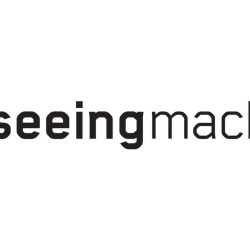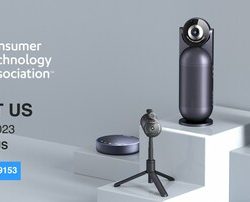DTN news
DTN feed
DTN video
DTN expert blogs
 Catherine Lian
Catherine Lian
Catherine Lian was named Managing Director IBM Malaysia in April 2019. In this role, she is responsible for the growth and leadership of IBM Malaysia’ operations, which includes sales and…
 Tan Chin Kuan
Tan Chin Kuan
Tan Chin Kuan (CK) CK is a Senior Director of Qlik’s Global Solutions and Value Engineering team. His team focus on business value consulting and advises top strategic clients in…
 Gibu Mathew
Gibu Mathew
Gibu Mathew is the vice president and GM, Asia Pacific, of Zoho Corp, where he primarily focuses on setting strategies and vision for regional growth. Over the years, he has…
 Nancy Friedrich
Nancy Friedrich
Nancy Friedrich is the Aerospace & Defense Industry Solutions Manager at Keysight Technologies, based in New Jersey, USA. Her prior experience spans 20 years in specialist engineering editorial & publishing,…
 Syed Ahmad
Syed Ahmad
Since joining Asia Online Publishing Group (AOPG) in 2017, Syed has been tasked with overseeing the editorial content and day-to-day news operations of AOPG’s IT portals, primarily Data Storage Asean…
Editor's Picks
Thailand Heightens Healthcare Hub Ambition with Integrative Medicine
Living with the COVID-19 pandemic, people start to recognise the equal importance of modern medicine and preventive practices in maintaining their good health and well-being. With a strong healthcare and wellness…
UBTECH Announces Global Debut of Intelligent Healthcare Robots and Solutions
On the 31st of August UBTECH ROBOTICS CORP LTD hosted a forum, “The Integration of the High Technology and the Elderly-care Service Industry ,” together with the launching of “The Global…
Tissue Regeneration Technology: Emerging Frontier of Sustainable and Safer Implant-Assisted Surgeries
Authored by: Mark Leong, Chief Executive Officer – Osteopore With the constant advancements in medical technology, it is no secret that the medical industry, as a whole, has been able to…
Filipino Tech Company VCTNaDS to Add NinjaOne to Roster of Digital Solutions with Grand Launch in October
VCT Network and Data Solution (VCTNaDS), a Filipino-founded company focusing on premier IT products and services that aim to future-proof the daily operations of organisation, will formally launch NinjaOne, a global…


































Join us at Asia's award-winning B2B enterprise technology event, Cloud Expo Asia on 12-13 October 2022 at Marina Bay Sands Expo and Convention Centre.
Registering for one FREE ticket allows you to source from over 400 exhibitors including Digital Realty, Equinix, GitLab, Huawei, Snyk, Tencent Cloud, VMware, Zoho and more. Plus, get to learn from over 600 international speakers from organisations such as CXA, DHL Express, Liberty Insurance, Ministry of Health, MSD, Panasonic Asia, and Standard Chartered Bank just to name a few.
Register for your FREE ticket here: https://disruptivetechasia.com/events/cloud-expo-asia-exhibition-2022-singapore/
Ultra-fast and reliable Wi-Fi, has, in a way, become an important enabler for business success. That is why, Wi-Fi 6 is a game-changer for businesses, and an upgraded version like RUCKUS by CommScope can do even more for any organisation that uses it.
Find out more: https://disruptivetechasia.com/big_news/reliable-connectivity-for-all-five-notable-use-cases-for-wi-fi-6/
NFT are all the rage these days, and yet they are mostly misunderstood. Pulling back the curtains on NFTs is Disruptive Tech Asia (DTA), whose staff has meticulously prepared a special focus e-book about NFTs.
Download it now and you might just win yourself a prize along the way: https://disruptivetechasia.com/big_news/jumpstart-your-nft-journey-with-dtas-e-book-on-nfts/
Neo4j recently appointed Reza Pahlevi, as Neo4j Indonesia’s Managing Director, to support Indonesia Emas 2045, the nation’s long-term vision of becoming a sovereign, advanced, fair, and successful nation by 2045.
In an interview with DTA, he expressed his pride and honour at becoming a “node” in the Neo4j APAC Graph: https://disruptivetechasia.com/big_news/neo4j-deepens-indonesia-commitment-to-become-a-digitalised-nation-with-graph-technology/
Brandon Richards, Neo4j’s General Manager for Asia, and Daniel Ng, Neo4j’s Vice President of Marketing for Asia Pacific, sit down with DTA to discuss the evolution of data and how knowledge graphs are making huge waves in almost all industries that are leveraging the power of data.
Watch the interview now: https://disruptivetechasia.com/big_news/from-collected-data-to-connected-data-how-are-knowledge-graphs-changing-the-world/
Sandbox, a quantum technology group in Google aka Alphabet Inc. has now gone independent from them. Now known as Sandbox AQ with AQ standing for AI and quantum, what services do they offer? And what do they hope to bring to the tech sector?
Find out now: https://disruptivetechasia.com/big_news/sandbox-spins-off-from-alphabet/
Watch this exclusive webcast with Ravi Rajendran, Vice-President for Asia Pacific at Cohesity and DTA tech journalist, Martin Dale Bolima, who will be talking about modern data management solutions and how these can help organisations manage and protect their most valuable resource: Data:
https://disruptivetechasia.com/big_news/tech-lockdown-webcast-cohesitys-ravi-rajendran-explains-all-about-next-gen-data-management/
H2O.ai just announced their H2O Hydrogen Torch, a deep learning training engine that makes it easy for companies of any size in any industry to make state-of-the-art image, video and Natural Language Processing (NLP) models without coding.
Check it out: https://disruptivetechasia.com/big_news/h2o-ai-democratises-deep-learning-with-h2o-hydrogen-torch/
Players in the manufacturing industry are facing lots of challenges—and that is nothing new. But, as always, technology is proving to be a difference-maker in terms of addressing issues in the industry, only this time, innovation, automation and digitalisation have taken on even greater importance.
Find out what experts for Siemens has to say: https://disruptivetechasia.com/big_news/in-this-digital-first-world-manufacturers-need-to-leverage-tech-more-than-ever-to-address-challenges/
Shell and Porsche have launched the first regional cross-border High-Performance Charging network in Southeast Asia. Customers will soon be able to charge their electric cars swiftly along Malaysia’s North-South Highway and ensure a safe and seamless journey from Singapore to Thailand.
Learn more about it: https://disruptivetechasia.com/big_news/shell-and-porsche-launch-the-first-regional-cross-border-high-performance-charging-network-in-southeast-asia/
Utilising the intelligent edge can give a company an advantage over its competitors. That is why it is time for your organisation to explore the intelligent edge. But if you want to truly get an edge, then deploying SUSE Edge is something you will have to consider.
To find out more about this pioneering edge solution and how it can help your business, read ahead: https://disruptivetechasia.com/big_news/get-an-edge-with-suse-edge/
Process automation is no longer a thing of the future, and your business has the opportunity to thrive by embracing the technologies of today. How can you benefit from automating your paper-based processes?
Let’s find out: https://disruptivetechasia.com/big_news/the-time-for-paper-is-over-and-applications-are-the-solution/
We are proud to announce the launch of on360°, our new digital content engagement platform designed to help you drive online customer interaction and contact acquisition with innovative, exciting and enticing content.
Using on360° you can quickly build, publish, and syndicate web-based content such as training academies, digital showcases, full virtual exhibitions, vibrant download pages, and online intelligent assessments.
As part of the launch, we are sharing our "Interactive Digital Engagement Marketers PlayBook" which you can view here: https://lnkd.in/gGqiYQWE
Today’s work environment demands new levels of flexibility to adapt to changing conditions, a distributed workforce and workflows that extend across your entire organisation, customers and partners. And that is what Cisco is bringing to the table with their new Webex innovations.
Find out what they’re offering: https://disruptivetechasia.com/big_news/new-webex-by-cisco-innovations-ensures-organisations-of-all-sizes-are-ready-for-the-future-of-hybrid-work/
Enterprises around the world are increasingly recognising the importance of digital transformation. To help them on this, Huawei unveiled at its HUAWEI CONNECT 2021, four new upgrades to its CloudCampus 3.0 Solution.
Find out what they are: https://disruptivetechasean.com/big_news/huawei-launches-four-upgrades-to-its-cloudcampus-3-0-solution/
Southeast Asia is seeing continued growth in terms of AI deployment. But, AI adoption comes with both opportunities and challenges. In an exclusive interview with DTA, Ravi Saraogi, Co-Founder of and President of Asia Pacific at Uniphore shares his views on this and more.
Find out more: https://disruptivetechasean.com/big_news/ai-is-here-to-stay-and-organisations-need-to-embrace-it/
Builder.ai recently launched a beta of Natasha, the world’s first AI-powered product manager in their continued efforts to democratise software development with Builder Studio 3.0.
Check it out: https://disruptivetechasean.com/big_news/builder-ai-introduces-natasha-the-worlds-first-ai-software-expert-designed-to-help-businesses-order-tailor-made-software/
As enterprises increasingly depend on technology to facilitate their businesses, IT helpdesks are becoming more overwhelmed. Companies must look for an IT Management solution that can improve the process of resolving issues in a fast, productive way without affecting the quality of customer interaction.
Read on to find out how SummitAI can help unleash enterprise productivity for your business. Click here
Organisations need to discard legacy systems that are holding back productivity and making the workforce IT experience laborious and unsatisfactory. This is especially the case when certain signs are observed.
Find out what they are: https://disruptivetechasean.com/big_news/five-signs-that-you-need-to-automate-your-it-service-management/
IBM has unveiled its latest innovation, the next-gen IBM Z processor chip called Telum. Named after the javelin of the Greek goddess Artemis, it features industry-first, real-time AI capabilities and is the culmination of years of research by IBM.
Check it out: https://disruptivetechasean.com/big_news/ibm-unveils-pioneering-telum-processor-in-virtual-media-brief/
H2O.ai recently hosted a Women in AI panel consisting of three women leaders within the financial industry which focused on the increasing uses and functionalities of AI within the financial industry and the issues of diversity within the field of Data Science:
Check out our coverage of the session: https://disruptivetechasean.com/big_news/ai-leading-women-in-the-finance-industry/
FICO recently announced patents for 13 different platforms utilising artificial intelligence, machine learning and fraud and decision management.
Find out what they are: https://disruptivetechasean.com/big_news/fico-announces-patents-for-artificial-intelligence-machine-learning-and-fraud-and-decision-management-platforms/
Thailand, The Land of Smiles, may have more things to smile about soon. Thailand’s Ministry of Foreign Affairs says that the country is on the verge of turning into an Asian digital behemoth.
Find out more: https://disruptivetechasean.com/big_news/the-next-digital-behemoth-thailands-4-0-revolution/
The effects of the climate crisis are not an “in the far future” thing anymore: it is already happening today. One of the top contributors to it are enterprises. As such, enterprises must use innovative solutions to improve the way they operate – for the betterment of the company and of the world.
Here are some sustainable technologies making trends that can help us: https://disruptivetechasean.com/big_news/technological-trends-enterprises-must-consider-in-being-sustainable/
Humans can't compete with the efficiency & reliability of machines. They’re cold, logical & unbiased. Just the qualities employers look for in recruiters. That’s why companies are turning to AI to hire human workers. But, is it a good idea to take humanity out of HR?
Find out: https://disruptivetechasean.com/big_news/the-use-of-ai-in-company-recruitment-reducing-the-humanity-in-hiring/
Google Cloud and Ericsson are teaming up to jointly develop 5G and edge cloud solutions to help communications service providers digitally transform and to unlock new enterprise and consumer use cases.
Find out more: https://disruptivetechasean.com/big_news/google-cloud-and-ericsson-partner-to-deliver-5g-and-edge-cloud-solutions-for-telecommunications-companies-and-enterprises/
Digitising human resources can be challenging. Organisations want to have a simple, straightforward way of dealing with employees.
DTA speaks to Clement Tan, Group CEO and Managing Director of RAMSSOL GROUP BERHAD on how a mobile HR application can help organisations manage their staff: https://disruptivetechasean.com/big_news/simplifying-hr-management/
Everyone talks about 5G. But who holds the best patent portfolio to standardise its implementation worldwide?
Find out here: https://disruptivetechasean.com/big_news/nokia-ranked-as-number-one-in-5g-patents/
Adobe Summit 2021, the world’s largest digital experience conference saw major announcements and innovations being made to help businesses better serve their customers.
Find out more:
https://disruptivetechasean.com/big_news/adobe-summit-2021-perfecting-the-customer-experience/
With companies moving to leverage AI, cloud and IoT to boost their operations, it is easy to see why the human touch is overlooked.
Listen to AVEVA’s Kim Custeau talk about the importance of ‘Connected Workers’ in these companies: https://disruptivetechasean.com/big_news/why-the-human-interface-of-ai-is-critical-for-optimised-industrial-operations/
5G is the next step in connectivity. But as it is new, there will be some inefficiencies. That is why Samsung Electronics has developed a new 5G wideband radio technology to help drive more flexible and cost-effective 5G deployments.
Find out: https://disruptivetechasean.com/big_news/samsung-develops-new-5g-radio-technology-for-efficient-5g-deployments-in-mid-band-spectrum/
Crypto, the newest thing to disrupt the conventional financial systems all over the world. Despite many critics against it, its adoption is growing steadily. How much has it grown? What does the future hold for it?
Take a peek here: https://disruptivetechasean.com/big_news/crypto-com-visa-card-spending-grew-55-per-user-in-2020-online-spending-up-117/
Remember all those futuristic utopias we see in sci-fi movies set in the distant future, where the digital world is one with the physical? Well, it might not be so distant after all. Find out how commerce is integrating AR and 3D projection to attract customers:
https://disruptivetechasean.com/big_news/ar-and-3d-the-new-tools-of-commerce-to-attract-and-satisfy-customers/
Asia Online Publishing Group is expanding its Disruptive Tech Asean news portal to the Thai market. With many IT professionals in Thailand fast adopting disruptive tech, they can now find all the latest news on the topic in one convenient place.
Check out this article to find out more.
https://disruptivetechasean.com/big_news/asia-online-publishing-group-announces-disruptivetechasean-com-thai-language-edition/
There are many facial recognition technologies out there but how can one ensure that it provides the highest levels of security and privacy?
Check out this article as Intel have introduced the RealSense ID Facial Authentication which is “designed to deliver a secure facial authentication platform that users can trust”.
https://disruptivetechasean.com/big_news/intel-introduces-realsense-id-facial-authentication/
How will unified communications and collaboration platforms evolve in 2021?
What new security threats will such platforms face in the new year?
What is Zoom’s 2021 plans?
Watch this video posted by Disruptive Tech Asean to have all of these questions answered!
https://disruptivetechasean.com/big_news/all-zoomed-out-but-whats-around-the-corner/
The digital acceleration means that the need for faster, more reliable connectivity will only grow.
Read how CAT Telecom is collaborating with Huawei to adapt to global business trends and introduce the next-generation optical transport network in order to deliver ultra-low latency, wide coverage, high security and availability, as well as enhanced intelligence and agility.
https://disruptivetechasean.com/big_news/cat-telecom-thailand-pioneering-a-premium-private-line-market-through-next-gen-otn/
Global decarbonisation and AIoT technology leader, Envision Digital and Tridium Inc have entered into a strategic agreement to develop joint innovations!
Find out what to expect from this new partnership in this article!
https://disruptivetechasean.com/big_news/envision-digital-partners-with-tridium-to-enhance-the-development-of-smart-parks-and-smart-buildings/
An interesting read:
8 Intelligent Automation Predictions for 2021.
Stay informed and prepared for next year with these in-depth descriptions and break downs!
https://disruptivetechasean.com/big_news/eight-intelligent-automation-predictions-for-2021/
Limelight Networks Revolutionise Live Streaming Experience
"Realtime Streaming is part of the widest range of low latency online streaming solutions in the industry that solve this challenge."
To continue reading, click here!
https://disruptivetechasean.com/big_news/limelight-networks-revolutionise-live-streaming-experience/
What are the top 5 fintech technologies?
Financial organisations are utilising a wide range of new technology for their operations.
Find out more about some of them by checking out this article!
https://disruptivetechasean.com/big_news/top-5-fintech-technologies/
Hitachi Vantara and AWS Collaborate to Accelerate and Optimise Business Outcomes with IoT and AI
"Industrial customers need actionable insights to improve safety, streamline operations, increase efficiencies, reduce costs, and improve profitability in running their industrial operations."
Keep reading! Click here!
https://disruptivetechasean.com/big_news/hitachi-vantara-and-aws-collaborate-to-accelerate-and-optimise-business-outcomes-with-iot-and-ai/
Everyone must undergo digital transformation!
Following the repercussions of the pandemic on organisations, digital transformation is becoming a matter of survival.
Learn more about what your organisation can do to become more agile and adaptive by clicking here!
https://disruptivetechasean.com/big_news/everyone-has-to-undergo-digital-transformation-even-centuries-old-industries/
New Range of Huawei x Gentle Monster Smart Glasses Scores High On Form, Function and New Features.
"HUAWEI’s second-generation smart glasses continue to focus on audio and smart innovation, with a more avant-garde yet comfortable design and a greater wealth of outstanding smart functions to experience"
Click on the link to read more!
https://disruptivetechasean.com/big_news/new-range-of-huawei-x-gentle-monster-smart-glasses-scores-high-on-form-function-and-new-features/
UOB Malaysia Launches Malaysia’s First AI-Powered Digital Service on its All-in-One Mobile Banking App.
"Customers will receive personalised insights based on their banking and spending patterns, empowering them to track and to manage their savings and expenses effortlessly with this latest innovation to UOB Mighty."
Read the full article! Click here!
https://disruptivetechasean.com/big_news/uob-malaysia-launches-malaysias-first-ai-powered-digital-service-on-its-all-in-one-mobile-banking-app/
Are you losing track of all the latest IT news? Well, you can join our Telegram channel here: https://t.me/best_of_csa_dsa_and_dta to stay up to date with all the latest IT news.
Don’t miss out on the incredible videos we are publishing on our YouTube channel! Our content will help you stay well informed on technology news and terminology.
Check out the link and don't forget to subscribe! https://www.youtube.com/channel/UCq1hWigvXeC0Nlzn2s-49Mg
Thanks for your amazing post real all the information is given! You can also check our blog Work from home jobs
Register Now and be our influencer! All you need to do is to collect points to redeem your monthly rewards.
https://disruptivetechasean.com/events/influencers-program-we-need-you/
Stand a Chance to Win a Trip to Silicon Valley - Register For CIMB 3D Conquest. http://distruptivetechasean.com/events/cimb-3d-conquest/
Register now to join Online Hackathon organize by MAMPU on 18 September to 24 September. Please register before 17 September 2018. Click now!! http://ow.ly/5MQ330lOz06
Register now to join Big Data Week 2018 Satellite Event on 1-5 October 2018. Click here to register - http://singapore.bigdataweek.com/satellite-events/
Challenge Yourself with Data Wrangling. Register now to join Big Open Wrangle! http://distruptivetechasean.com/events/big-open-wrangle/
add your details to the big directory - http://distruptivetechasean.com/big-directory/
check out all the videos from Big Data week ! - we have posted many of them here on the home page.
Great video from Fusionex - check it out to the right!
The Big Project is coming soon - watch this space to see how you can get involved
The Big Data Journey Simplified !!
The Big Data Journey Simplified !!
Look out for our write up on Angelhack
Look out for more on Big Data Week Jakarta
Look out for more on Big Data Week Jakarta
great blog from MDEC Dr Karl - http://distruptivetechasean.com/big_news/driving-collaborations-to-boost-big-data-analytics-ecosystem-big-community/
Doug Cutting attended for the BASE Initiative yesterday.
The father of Hadoop, Doug Cutting is expected to be in Malaysia
check out the video feed, great video from Richard Sterling from Open Data Institute
http://distruptivetechasean.com/jobs/ check out the latest jobs
check out our expert blogs
MDeC Officially Launched Big Community today - WE ARE LIVE!!!